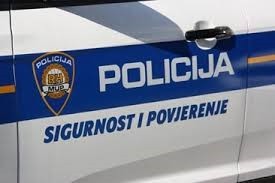Police and citizen brutality
Written by Valentina Šapina
On a daily basis, we witness numerous newspaper articles highlighting the physical violence of police officers and their transgression in the use of coercive means to citizens. In the last couple of years, we have all been familiar with the different cases of police brutality such as the case of a police officer in Osijek, who used the means of coercion to a 66-year-old woman who crossed the pedestrian while the red light was on. Then, a case in Zagreb when police officers used means of coercion to overcome passive resistance of a citizen who, according to his statement, warned police officers in a civilian police vehicle that they had been driving through the red light. Another case is related to the raid in a nightclub in Zagreb where citizens emphasized that it was not ordinary police raid but police brutality because some citizens got injuries, and one group of young people has been arrested.
The aforementioned testifies that nearly every day in the Croatian media a person can read about how police officers in the course of acting unjustifiably resort to violence against citizens, and these are just a few in a number of cases and newspaper articles that point to police brutality. The focus of this text would not be on analyzing the justifiability of the police action in the cases mentioned above, but rather to investigate these newspaper articles which refer to a slightly forgotten type of violence, violence that police officers experience from citizens during their work, the so-called “citizen brutality”.
In the review of newspaper articles on the Internet, there was a disproportion in reporting about “police brutality” and “citizen brutality”. Almost every day we can find an article that reports about the violence of police officers and unnecessary overruns in the use of coercive means while “citizen brutality” is an exception. This disparity does not go in favor of displaying statistical data which show that 742 people (709 adults and 34 underage children) was reported for a period of time between 2015 and 2017 for coercive acts and attacks on an official, and among the victims of these criminal offenses are police officers. The above refers to the fact that almost every other day an official person in the Republic of Croatia is a victim of coercive acts and attacks because of doing his job, but the media rarely, and usually in the most extreme cases, reports about this type of violence.
Observing the above-mentioned criminal offenses in a largest police administrations in the Republic of Croatia, it was found that 103 criminal acts of coercion and attack on the official person (police officer) were committed at the level of the Police administration of Zagreb, representing 13.9% of the total number of these criminal offenses committed in the territory of the Republic of Croatia in the observed period of time. Observing the frequency of such criminal offenses in relation to the number of police interventions provided, it was found that during the observed period, police officers of the Police administration of Zagreb provided 211 116 interventions, which means that in only 0.05% of the cases these crimes were committed.
From these statistical data we can conclude that given the quantity of police interventions provided to citizens, very rarely coercion or attack on police officers occurs (in 0.05% cases) but it is also apparent that almost every other day a police officer in the Republic of Croatia is a victim of coercion or assault because of doing his job.
In recent years, the public was familiar with some cases of “citizen brutality”, including the case of an American who attacked a police officer and thrust a knife in his neck during a police car ride; the case of an attack on police officers who detected a vehicle in a traffic offense and when they arrested the perpetrator in front of his house, his parents physically attacked them; the case of police officers who came to a Caffe bar where they were physically attacked by people who violated public order and peace.
However, the biggest attention and reaction happened a few months ago when video footage came up online, showing a case where two police officers were physically attacked by a few male perpetrators. The conducted criminal investigation found that these police officers were not real police officers but rather people masked like them during the carnival. That fact was unknown to the perpetrators. According to the information from the media, a physical attack happened when people dressed in police officers told young men who were standing near a bakery that they will bring them to a police station. These men then physically attacked ‘police officers’. The aforementioned video has caused a lot of reactions and numerous comments in the public and most often comments were extremely negative such as: “they got what they deserve”; “that’s right, let them be”; “do not be stupid and you will not get it”. Many comments not only that supported citizen brutality towards police, but they also encouraged it.
Analyzing the comments of newspaper articles reporting “citizen brutality” as well as “police brutality” it is evident that in cases of police brutality there is a zero-tolerance on violence. However, that is not the case regarding citizen brutality towards police, in which case people easily justify and even encourage that type of violence. Citizen brutality is a form of violence that is not only suppressed but also being approved in public. Namely, it is still an unexplored form of violence in Croatia that certainly deserves a scientific focus with the main goal to identify the phenomenological and etiological features of this form of violence.
References:
https://net.hr/danas/crna-kronika/policijska-brutalnost-u-osijeku-policajac-srusio-zenu-jer-je-prosla-kroz-crveno/, accessed on 07.05.2019.
https://vijesti.rtl.hr/novosti/crna-kronika/3432345/policijska-brutalnost-u-zagrebu-da-nije-bilo-svjedoka-oko-mene-presudili-bi-njima-u-korist/, accessed on 07.05.2019.
https://music-box.hr/2019/03/18/policija-trenira-strogocu-na-krivima-prilikom-racije-u-klubu-funk-ima-i-ozlijedenih/, accessed on 08.05.2019.
Art. 87, par. 3, Criminal Code (NN 125/11, 144/12, 56/15, 61/15, 101/17, 118/18)
https://www.dzs.hr/, accessed on 07.05.2019.
Report on the status and movement of security indicators in the Police Administration of Zagreb in 2015, 2016 and 2017
https://www.24sata.hr/news/zena-tijekom-privo-enja-ubola-policajca-prevezli-ga-u-bolnicu-524573, accessed on 15.05.2019.
https://www.24sata.hr/news/roditelji-istukli-policajce-jer-su-im-uhitili-sina-28233, accessed on 15.05.2019.
https://aktualno.hr/ima-i-toga-dva-muskarca-istukli-policajce-jednom-uzeo-lisice-i-tukao-ga-njima/, accessed on 10.05.2019.
https://www.vecernji.hr/vijesti/video-kruzi-snimka-tucnjave-brutalno-pretukli-muskarce-odjevene-kao-policajci-1304426, accessed on 12.05.2019.
https://www.24sata.hr/news/policija-istrazuje-video-ispred-pekarnice-potukle-se-maskare-617157/, accessed on 15.05.2019.

